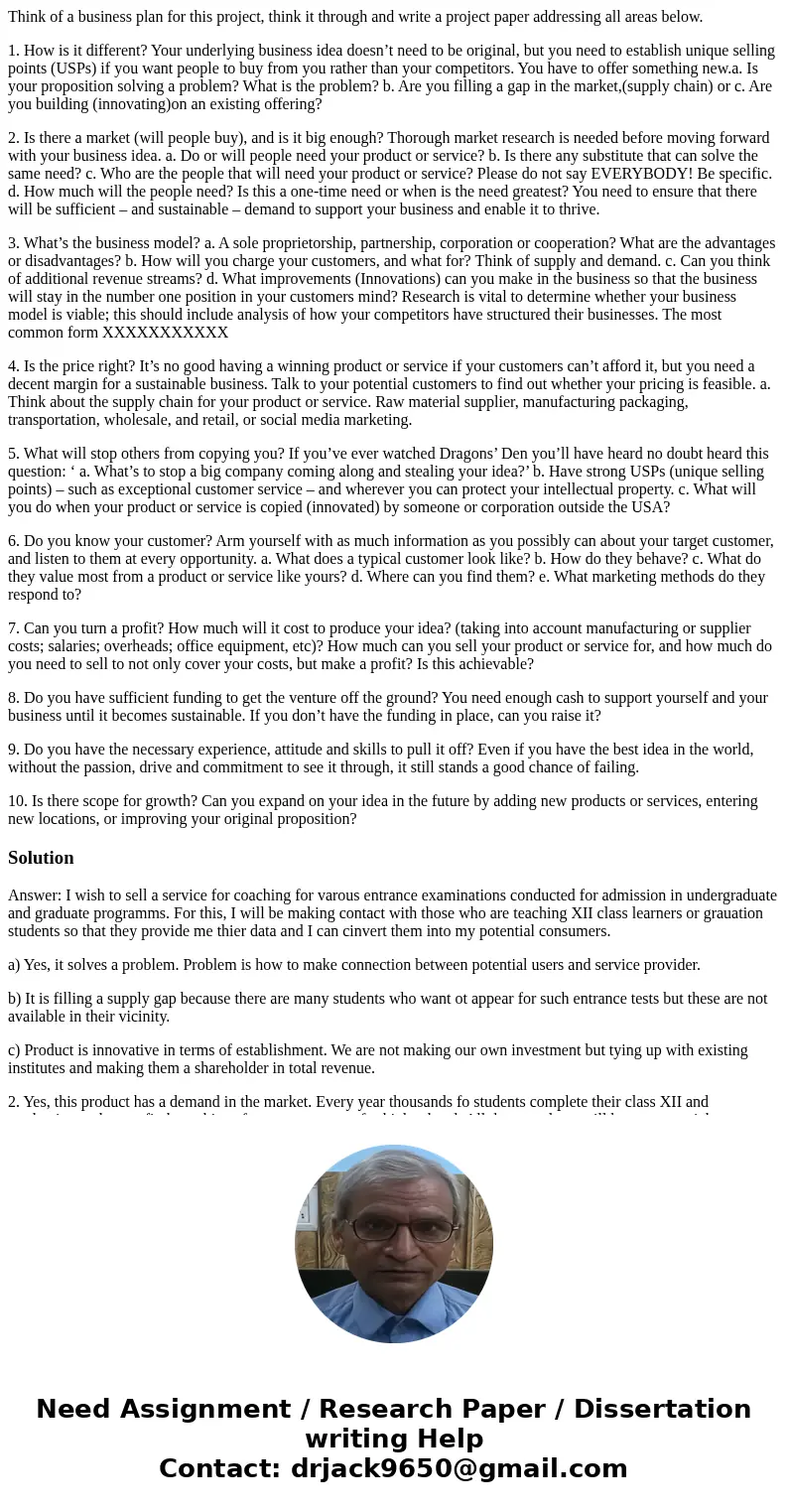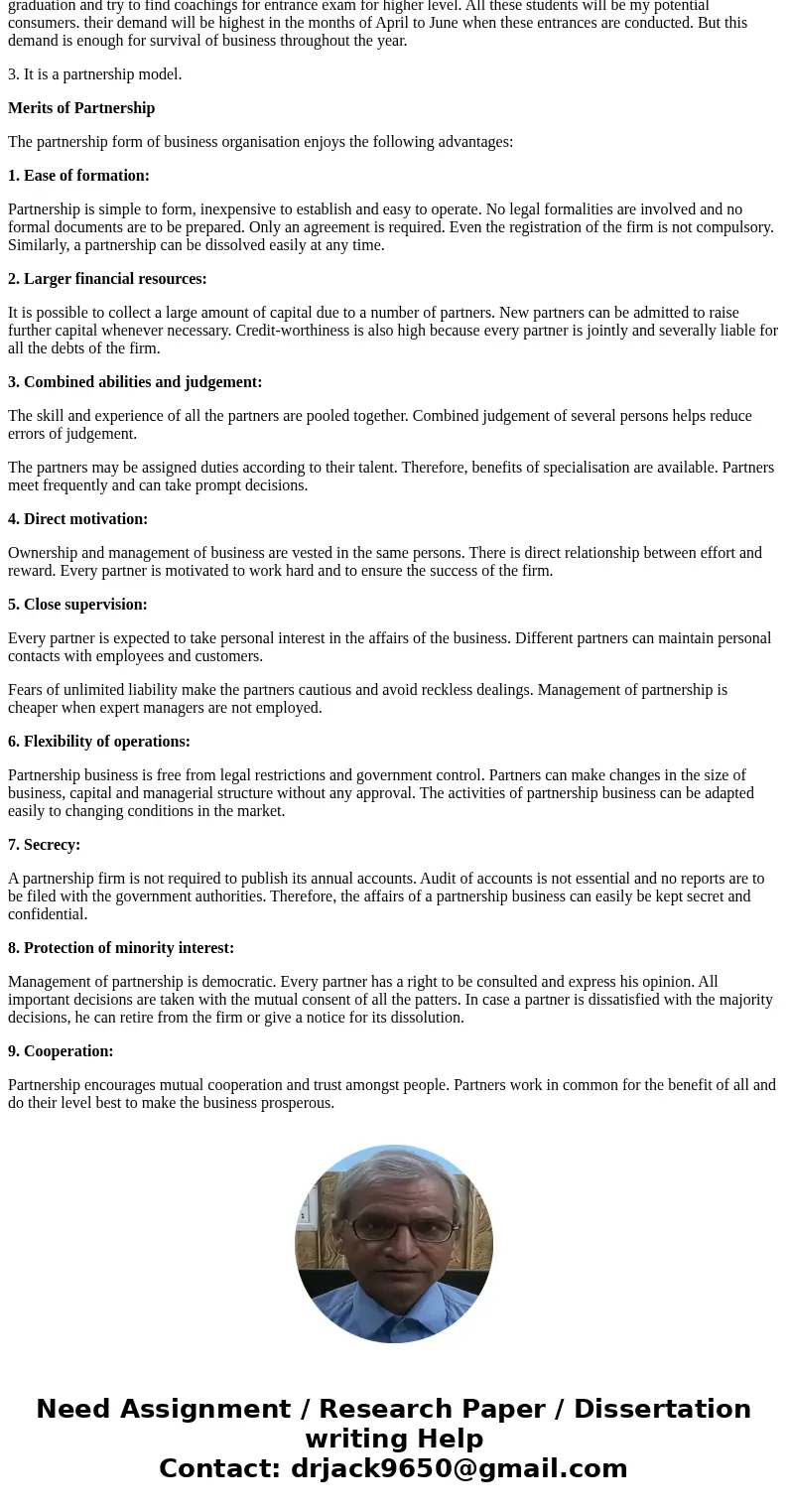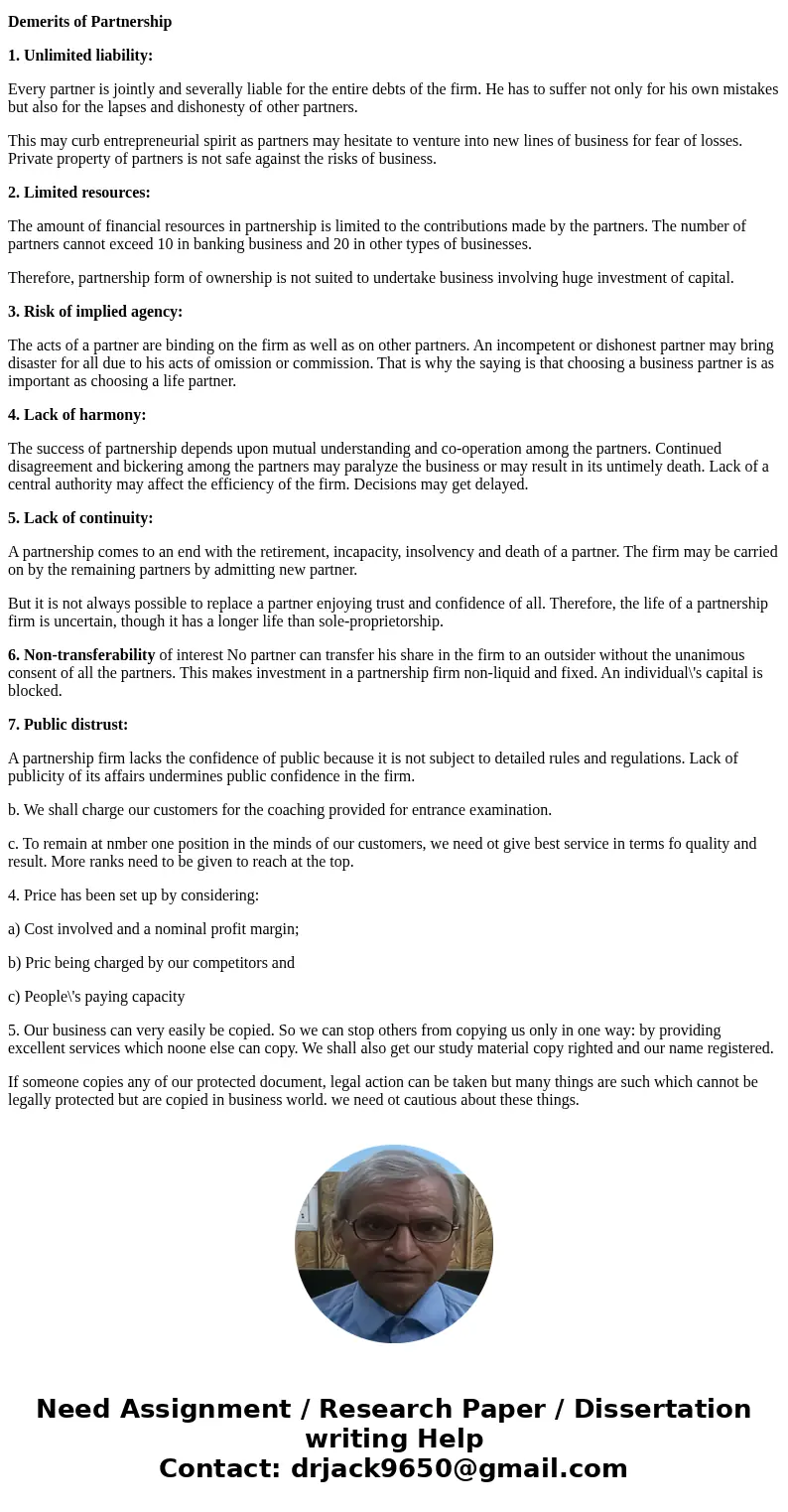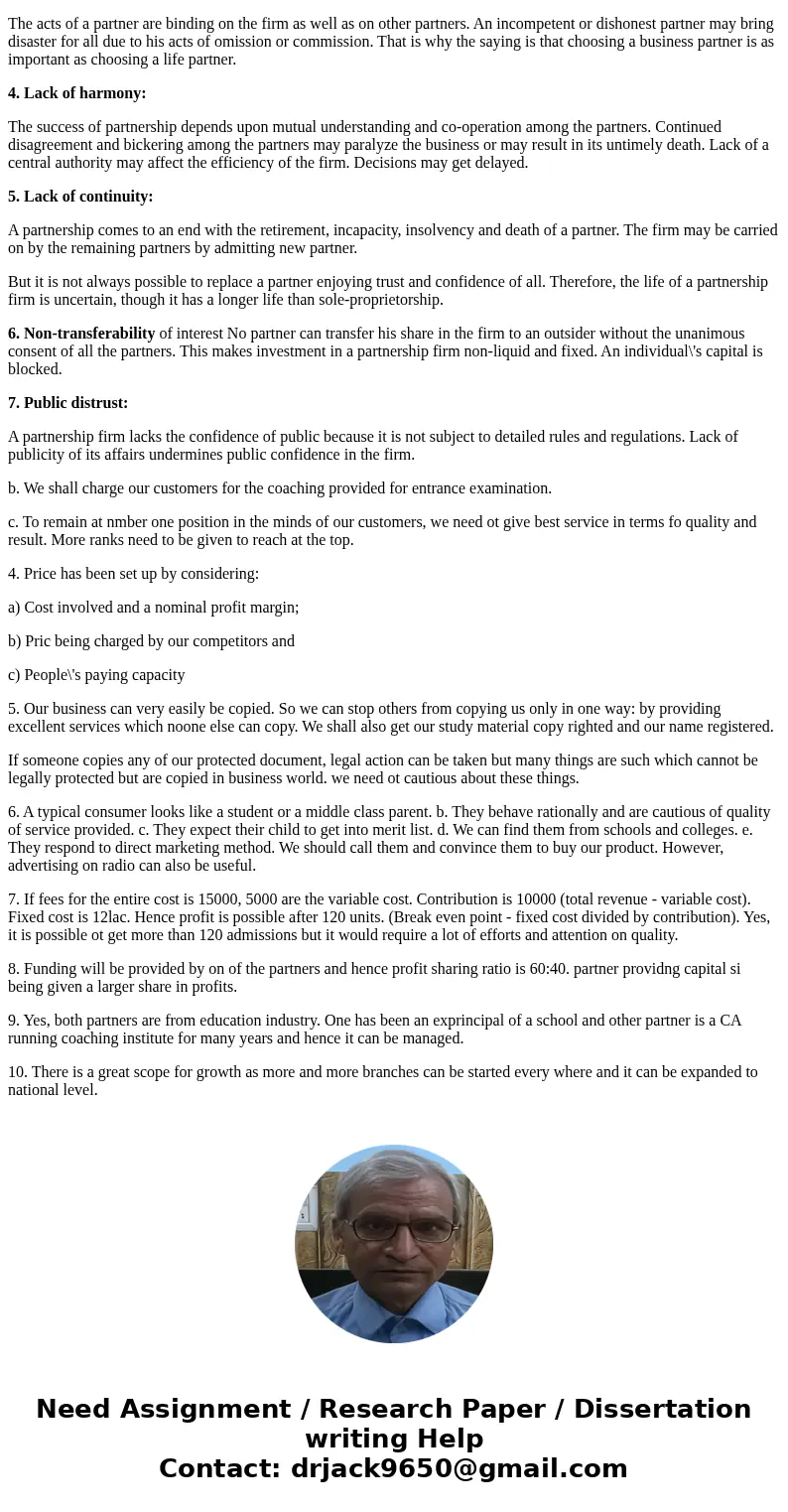Think of a business plan for this project think it through a
Think of a business plan for this project, think it through and write a project paper addressing all areas below.
1. How is it different? Your underlying business idea doesn’t need to be original, but you need to establish unique selling points (USPs) if you want people to buy from you rather than your competitors. You have to offer something new.a. Is your proposition solving a problem? What is the problem? b. Are you filling a gap in the market,(supply chain) or c. Are you building (innovating)on an existing offering?
2. Is there a market (will people buy), and is it big enough? Thorough market research is needed before moving forward with your business idea. a. Do or will people need your product or service? b. Is there any substitute that can solve the same need? c. Who are the people that will need your product or service? Please do not say EVERYBODY! Be specific. d. How much will the people need? Is this a one-time need or when is the need greatest? You need to ensure that there will be sufficient – and sustainable – demand to support your business and enable it to thrive.
3. What’s the business model? a. A sole proprietorship, partnership, corporation or cooperation? What are the advantages or disadvantages? b. How will you charge your customers, and what for? Think of supply and demand. c. Can you think of additional revenue streams? d. What improvements (Innovations) can you make in the business so that the business will stay in the number one position in your customers mind? Research is vital to determine whether your business model is viable; this should include analysis of how your competitors have structured their businesses. The most common form XXXXXXXXXXX
4. Is the price right? It’s no good having a winning product or service if your customers can’t afford it, but you need a decent margin for a sustainable business. Talk to your potential customers to find out whether your pricing is feasible. a. Think about the supply chain for your product or service. Raw material supplier, manufacturing packaging, transportation, wholesale, and retail, or social media marketing.
5. What will stop others from copying you? If you’ve ever watched Dragons’ Den you’ll have heard no doubt heard this question: ‘ a. What’s to stop a big company coming along and stealing your idea?’ b. Have strong USPs (unique selling points) – such as exceptional customer service – and wherever you can protect your intellectual property. c. What will you do when your product or service is copied (innovated) by someone or corporation outside the USA?
6. Do you know your customer? Arm yourself with as much information as you possibly can about your target customer, and listen to them at every opportunity. a. What does a typical customer look like? b. How do they behave? c. What do they value most from a product or service like yours? d. Where can you find them? e. What marketing methods do they respond to?
7. Can you turn a profit? How much will it cost to produce your idea? (taking into account manufacturing or supplier costs; salaries; overheads; office equipment, etc)? How much can you sell your product or service for, and how much do you need to sell to not only cover your costs, but make a profit? Is this achievable?
8. Do you have sufficient funding to get the venture off the ground? You need enough cash to support yourself and your business until it becomes sustainable. If you don’t have the funding in place, can you raise it?
9. Do you have the necessary experience, attitude and skills to pull it off? Even if you have the best idea in the world, without the passion, drive and commitment to see it through, it still stands a good chance of failing.
10. Is there scope for growth? Can you expand on your idea in the future by adding new products or services, entering new locations, or improving your original proposition?
Solution
Answer: I wish to sell a service for coaching for varous entrance examinations conducted for admission in undergraduate and graduate programms. For this, I will be making contact with those who are teaching XII class learners or grauation students so that they provide me thier data and I can cinvert them into my potential consumers.
a) Yes, it solves a problem. Problem is how to make connection between potential users and service provider.
b) It is filling a supply gap because there are many students who want ot appear for such entrance tests but these are not available in their vicinity.
c) Product is innovative in terms of establishment. We are not making our own investment but tying up with existing institutes and making them a shareholder in total revenue.
2. Yes, this product has a demand in the market. Every year thousands fo students complete their class XII and graduation and try to find coachings for entrance exam for higher level. All these students will be my potential consumers. their demand will be highest in the months of April to June when these entrances are conducted. But this demand is enough for survival of business throughout the year.
3. It is a partnership model.
Merits of Partnership
The partnership form of business organisation enjoys the following advantages:
1. Ease of formation:
Partnership is simple to form, inexpensive to establish and easy to operate. No legal formalities are involved and no formal documents are to be prepared. Only an agreement is required. Even the registration of the firm is not compulsory. Similarly, a partnership can be dissolved easily at any time.
2. Larger financial resources:
It is possible to collect a large amount of capital due to a number of partners. New partners can be admitted to raise further capital whenever necessary. Credit-worthiness is also high because every partner is jointly and severally liable for all the debts of the firm.
3. Combined abilities and judgement:
The skill and experience of all the partners are pooled together. Combined judgement of several persons helps reduce errors of judgement.
The partners may be assigned duties according to their talent. Therefore, benefits of specialisation are available. Partners meet frequently and can take prompt decisions.
4. Direct motivation:
Ownership and management of business are vested in the same persons. There is direct relationship between effort and reward. Every partner is motivated to work hard and to ensure the success of the firm.
5. Close supervision:
Every partner is expected to take personal interest in the affairs of the business. Different partners can maintain personal contacts with employees and customers.
Fears of unlimited liability make the partners cautious and avoid reckless dealings. Management of partnership is cheaper when expert managers are not employed.
6. Flexibility of operations:
Partnership business is free from legal restrictions and government control. Partners can make changes in the size of business, capital and managerial structure without any approval. The activities of partnership business can be adapted easily to changing conditions in the market.
7. Secrecy:
A partnership firm is not required to publish its annual accounts. Audit of accounts is not essential and no reports are to be filed with the government authorities. Therefore, the affairs of a partnership business can easily be kept secret and confidential.
8. Protection of minority interest:
Management of partnership is democratic. Every partner has a right to be consulted and express his opinion. All important decisions are taken with the mutual consent of all the patters. In case a partner is dissatisfied with the majority decisions, he can retire from the firm or give a notice for its dissolution.
9. Cooperation:
Partnership encourages mutual cooperation and trust amongst people. Partners work in common for the benefit of all and do their level best to make the business prosperous.
Demerits of Partnership
1. Unlimited liability:
Every partner is jointly and severally liable for the entire debts of the firm. He has to suffer not only for his own mistakes but also for the lapses and dishonesty of other partners.
This may curb entrepreneurial spirit as partners may hesitate to venture into new lines of business for fear of losses. Private property of partners is not safe against the risks of business.
2. Limited resources:
The amount of financial resources in partnership is limited to the contributions made by the partners. The number of partners cannot exceed 10 in banking business and 20 in other types of businesses.
Therefore, partnership form of ownership is not suited to undertake business involving huge investment of capital.
3. Risk of implied agency:
The acts of a partner are binding on the firm as well as on other partners. An incompetent or dishonest partner may bring disaster for all due to his acts of omission or commission. That is why the saying is that choosing a business partner is as important as choosing a life partner.
4. Lack of harmony:
The success of partnership depends upon mutual understanding and co-operation among the partners. Continued disagreement and bickering among the partners may paralyze the business or may result in its untimely death. Lack of a central authority may affect the efficiency of the firm. Decisions may get delayed.
5. Lack of continuity:
A partnership comes to an end with the retirement, incapacity, insolvency and death of a partner. The firm may be carried on by the remaining partners by admitting new partner.
But it is not always possible to replace a partner enjoying trust and confidence of all. Therefore, the life of a partnership firm is uncertain, though it has a longer life than sole-proprietorship.
6. Non-transferability of interest No partner can transfer his share in the firm to an outsider without the unanimous consent of all the partners. This makes investment in a partnership firm non-liquid and fixed. An individual\'s capital is blocked.
7. Public distrust:
A partnership firm lacks the confidence of public because it is not subject to detailed rules and regulations. Lack of publicity of its affairs undermines public confidence in the firm.
b. We shall charge our customers for the coaching provided for entrance examination.
c. To remain at nmber one position in the minds of our customers, we need ot give best service in terms fo quality and result. More ranks need to be given to reach at the top.
4. Price has been set up by considering:
a) Cost involved and a nominal profit margin;
b) Pric being charged by our competitors and
c) People\'s paying capacity
5. Our business can very easily be copied. So we can stop others from copying us only in one way: by providing excellent services which noone else can copy. We shall also get our study material copy righted and our name registered.
If someone copies any of our protected document, legal action can be taken but many things are such which cannot be legally protected but are copied in business world. we need ot cautious about these things.
6. A typical consumer looks like a student or a middle class parent. b. They behave rationally and are cautious of quality of service provided. c. They expect their child to get into merit list. d. We can find them from schools and colleges. e. They respond to direct marketing method. We should call them and convince them to buy our product. However, advertising on radio can also be useful.
7. If fees for the entire cost is 15000, 5000 are the variable cost. Contribution is 10000 (total revenue - variable cost). Fixed cost is 12lac. Hence profit is possible after 120 units. (Break even point - fixed cost divided by contribution). Yes, it is possible ot get more than 120 admissions but it would require a lot of efforts and attention on quality.
8. Funding will be provided by on of the partners and hence profit sharing ratio is 60:40. partner providng capital si being given a larger share in profits.
9. Yes, both partners are from education industry. One has been an exprincipal of a school and other partner is a CA running coaching institute for many years and hence it can be managed.
10. There is a great scope for growth as more and more branches can be started every where and it can be expanded to national level.




 Homework Sourse
Homework Sourse